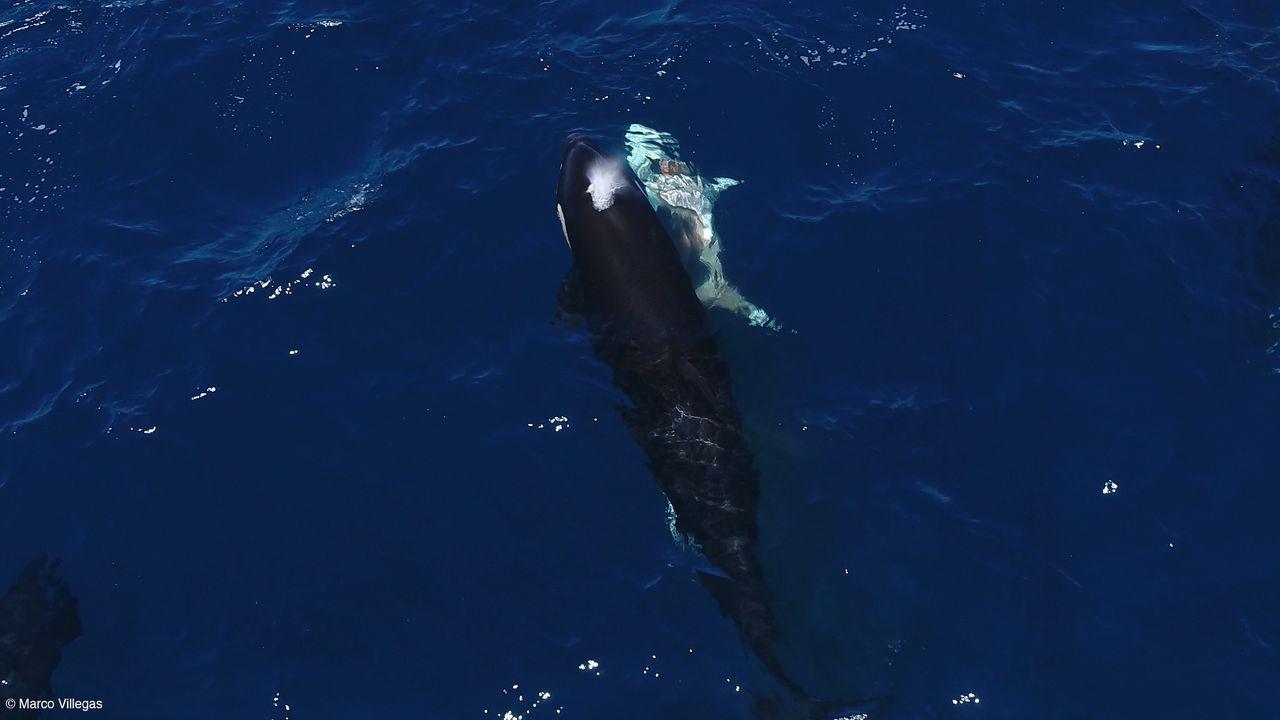BREAKING: New research reveals orcas in the Gulf of California are increasingly attacking juvenile great white sharks, employing a brutal yet strategic hunting technique. These unprecedented observations highlight a concerning shift in predator behavior, with orcas flipping their prey upside down to induce a trance-like state, known as tonic immobility, making the sharks defenseless.
The study, published on November 3, 2023, in the journal Frontiers in Marine Science, documents three separate attacks by Moctezuma’s pod, an orca group notorious for its aggressive hunting tactics. Researchers witnessed orcas extracting the nutrient-rich livers of juvenile great whites, a behavior previously undocumented in this region. Lead author Jesús Erick Higuera Rivas, a marine biologist, emphasized the significance of these findings, stating, “This is the first time we are seeing orcas repeatedly target juvenile white sharks.”
The orcas’ cunning technique involves flipping the sharks upside down, which disorients them and renders them unable to escape. In two attacks reported in August 2020, five orcas pursued a young great white until it was exhausted, turning it onto its back before emerging with its liver. A third attack in August 2022 followed a similar sequence, showcasing the orcas’ coordinated hunting skills.
The implications of this behavior are profound. Previously, orcas were known to hunt adult great whites in regions like South Africa and Australia, but juvenile attacks in the Northeast Pacific are extremely rare. The last confirmed sighting of such behavior off the West Coast dates back to 1997. The study’s co-author, Salvador Jorgensen, noted that adult great whites tend to flee quickly when orcas are present, suggesting that these juvenile sharks may be more naive and vulnerable to predation.
This new predatory behavior could be linked to recent shifts in the great white shark population, as rising ocean temperatures and climate events such as El Niño have altered their breeding patterns. Higuera Rivas pointed out that with more juvenile sharks now present in the Gulf, orcas may be adapting their hunting strategies accordingly.
Despite these alarming findings, it’s unclear whether orcas in this region exclusively target juvenile sharks or if they also attack adults. Observations of the injuries sustained by the sharks suggest that tonic immobility may protect orcas during liver extraction, minimizing the risk of bites.
“This behavior is a testament to orcas’ advanced intelligence and strategic thinking,” Higuera Rivas stated. As the research continues, scientists hope to understand whether these hunting techniques are instinctual or learned behaviors passed down through generations.
As this urgent situation unfolds, marine biologists are keeping a close eye on Moctezuma’s pod and its interactions with local shark populations. With rising ocean temperatures and changes in marine ecosystems, the dynamics between orcas and juvenile great white sharks could evolve rapidly.
Stay tuned for further updates on this developing story, as the implications for marine life and ecosystems in the Gulf of California continue to unfold.
